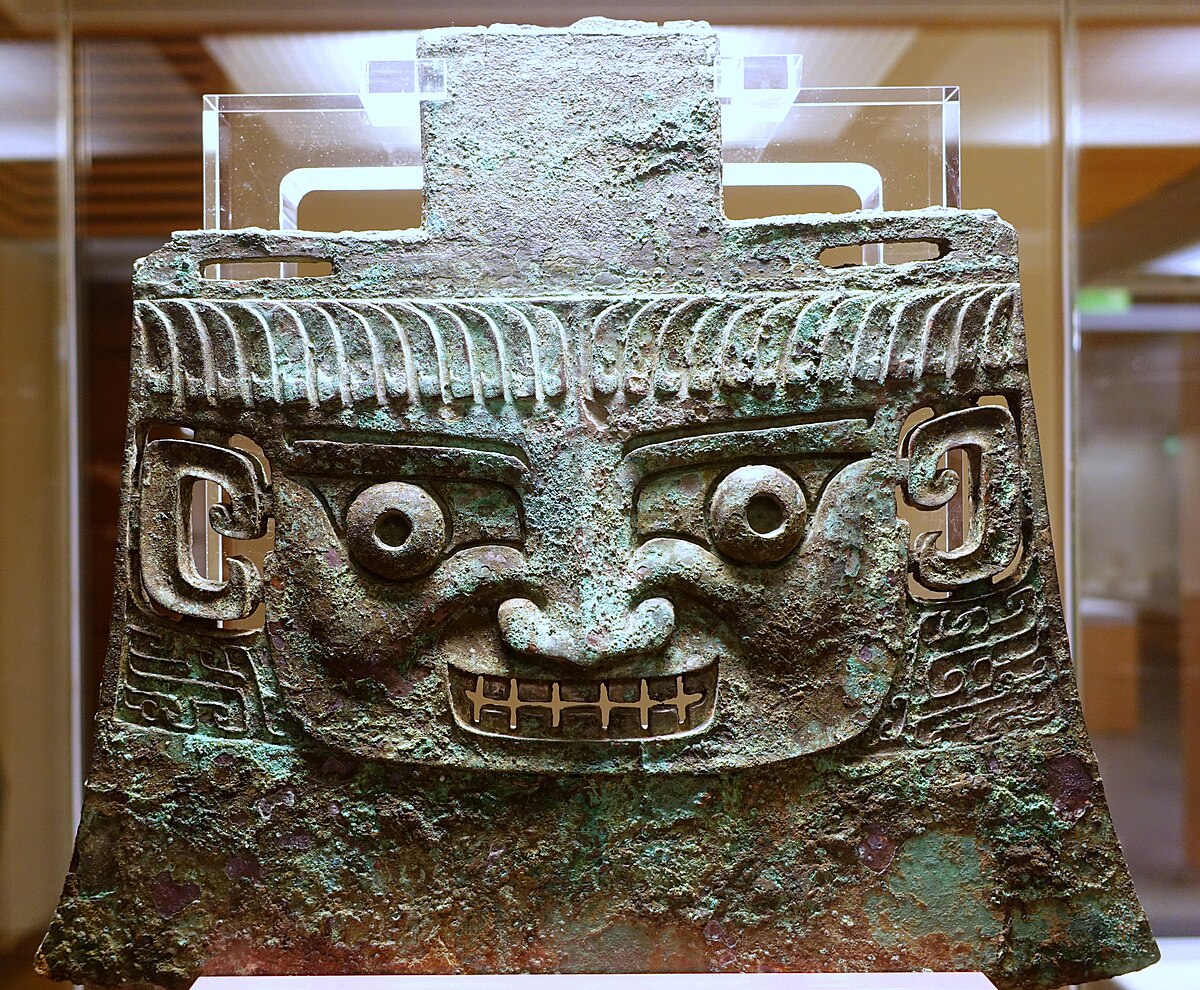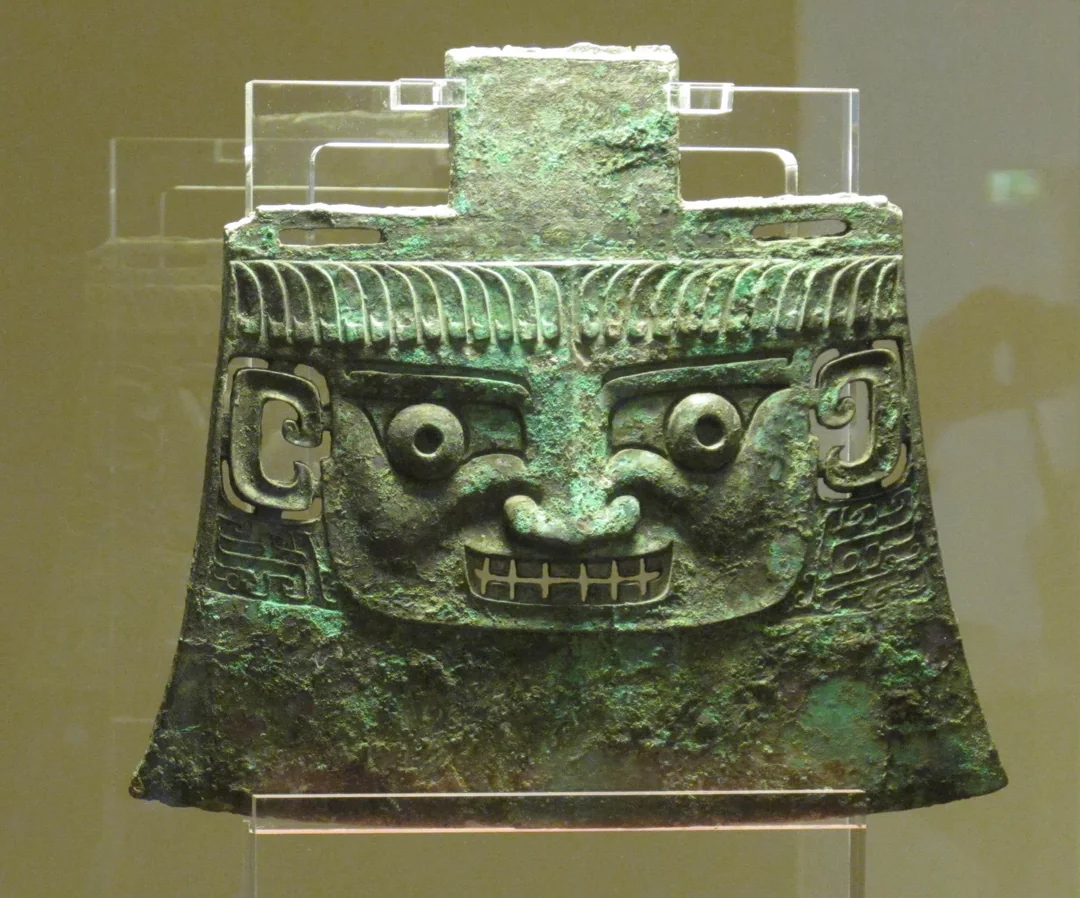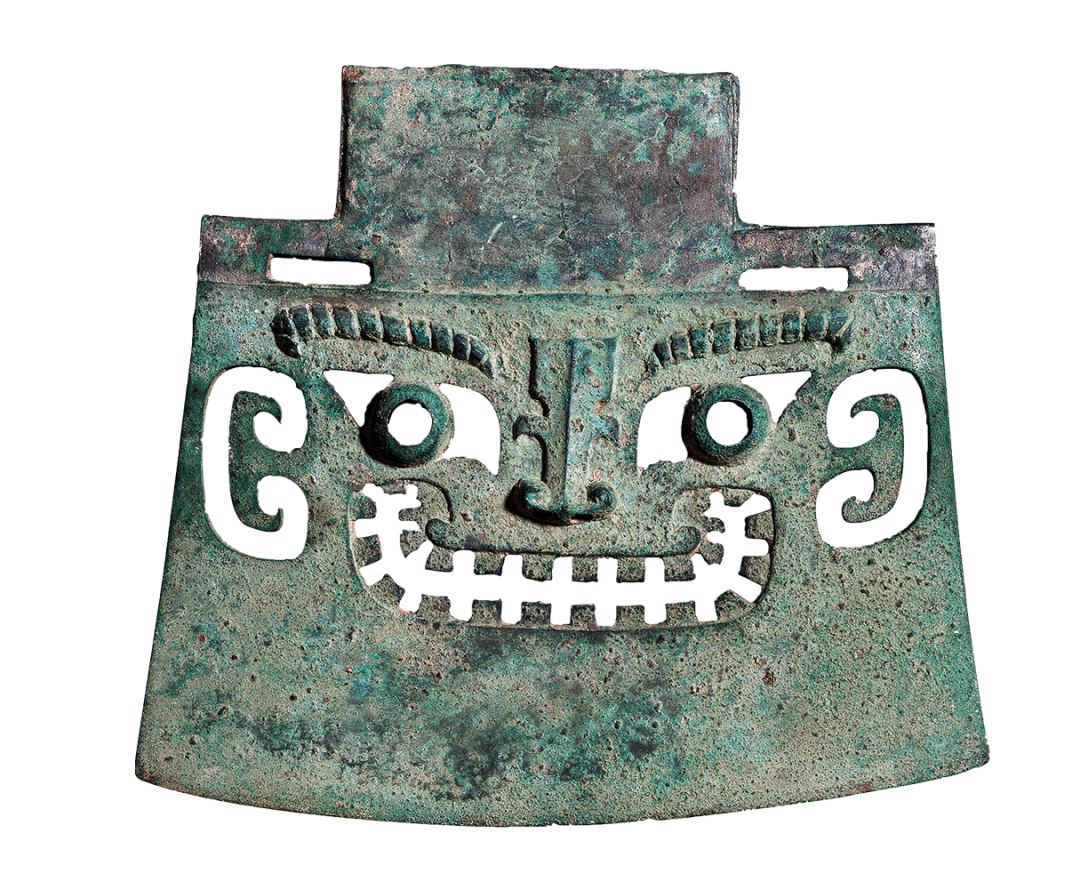Shang dynasty ceremonial Yue (axe)

Shang dynasty ceremonial Yue (axe), China 1600 – 1046 B.C.
The Yue is an axe-shaped weapon that was used in ancient China over 3,000 years ago. It features an impressively large blade—heavy yet not particularly practical for combat—emphasizing its symbolic rather than functional purpose. The Yue axe displayed at the Shanghai Museum measures 35.6 centimeters by 33.2 centimeters and weighs 5.16 kilograms. It has two small holes near the ridge for attaching it to a handle, but the large central hole surrounded by 18 inlaid turquoise crosses clearly indicates its ceremonial function.

Several Yue axes have been unearthed at archaeological sites once belonging to the capitals of the Xia Dynasty (c. 21st–16th century BC) and the Shang Dynasty (c. 16th–11th century BC) in present-day Henan Province. These elaborately designed bronze axes were likely never intended for warfare, though they might have been used for ritual beheadings or sacrifices. At the time, bronze was a rare and precious material, accessible only to the elite, whose social status was reflected in their ownership of bronze artifacts.

For many years, the turquoise-inlaid Yue was thought to date from the late Shang period. However, in 1975, a similar axe decorated with turquoise was discovered in the Erlitou cultural layer—associated with the Xia Dynasty—prompting scholars to revise its dating.

According to historical records from the Zhou Dynasty (c. 11th–8th century BC), the Yue was held upright by a warrior standing to the right of the throne in the royal court. This ceremonial position, along with the fact that the axe’s cutting edge was never sharpened, underscores its role as a symbol of authority and power rather than a weapon of war.











